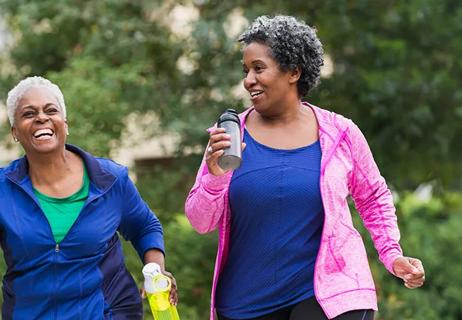Advertisement
Identifying the underlying cause key to successful treatment

A recent article published in American Academy of Hospice and Palliative Medicine provides an overview of approaches for treating intractable nausea and vomiting in the palliative care setting. Published by Cleveland Clinic palliative medicine specialist Kyle Neale, DO, the article explains that nausea and vomiting are best addressed using a mechanistic approach focused on uncovering the underlying cause of the patient’s symptoms.
Advertisement
Cleveland Clinic is a non-profit academic medical center. Advertising on our site helps support our mission. We do not endorse non-Cleveland Clinic products or services. Policy
There are multiple culprits for nausea and vomiting, particularly in the palliative care and oncology populations, including chemotherapy, anxiety, constipation, delayed motility of the gastrointestinal tract and functional bowel disorder. Although a number of medications can be trialed to alleviate the patient’s symptoms, Dr. Neale says there is no one-size-fits-all approach. The key, he explains, is to properly diagnose and treat the underlying cause by incorporating medications of different classes when needed.
“For chemotherapy-related nausea and vomiting, we usually prescribe ondansetron or prochlorperazine; we may occasionally escalate to a longer-acting drug like olanzapine,” explains Dr. Neale, a staff physician in Taussig Cancer Institute. For patients with anticipatory anxiety, drugs like lorazepam can be used to manage panic or anxiety episodes. Metoclopramide can also be helpful for encouraging motility and mitigating nausea.”
Many of the drugs clinicians have historically used to treat nausea and vomiting were originally designed for other purposes, he adds.
“For example, metoclopramide was initially derived to encourage motility in patients with poorly controlled diabetes, but it’s actually a very effective nausea drug as well. Olanzapine is actually an antipsychotic; at lower doses, however, it can be highly effective for managing severe chemotherapy-induced nausea and vomiting.”
Dr. Neale emphasizes that when there are several reasons behind a patient’s symptoms, an appropriate therapeutic regimen should be prescribed based on each medication’s mechanism of action.
“We know that the neurotransmitters in the area of the brain that promote nausea and vomiting are affected by many common medicines, so potential overlap should be considered,” he says. “For example, olanzapine targets many different neurotransmitters – a nice benefit that enables us to cover a lot of bases when several different causes of nausea are suspected.”
“In most cases, nausea and vomiting can be well-controlled with medication, so providing relatively rapid relief is simply a matter of finding the right treatment,” explains Dr. Neale. In general, nausea and vomiting are managed for as long as the underlying cause is present, but patients rarely require ongoing treatment.
Although available drugs for treating nausea and vomiting are quite safe, Dr. Neale cautions that care must be taken when adding medications to the patient’s existing drug regimen.
Advertisement
“We’re cautious when combining some of these drugs because of their potential to cause irreversible neurologic interactions in the long-term,” he says. “As a result, we judiciously avoid prescribing treatments that trigger too much of a dopamine or serotonin response. We also have to be careful that a patient’s other medications – particularly antidepressants and other antiemetics – are not activating too many of those neurotransmitters.”
Patients who are interested in incorporating complementary therapies such as meditation, acupuncture and aromatherapy are encouraged to explore options available through the Cleveland Clinic Center for Functional Medicine.
Finally, Dr. Neale encourages patients to speak up if their nausea and vomiting persists. “If the first medication does not work, other options are available,” he says.
Advertisement
Advertisement

Clinical trial to assess the value of nutritional, physical therapy and social supports prior to preoperative chemotherapy

Research demonstrates improved overall survival for patients receiving comprehensive treatment for breast cancer in addition to radiation or surgical intervention for brain cancer

Palliative and Supportive Care Teams offer comprehensive care to improve the lives of patients facing cancer

Newer medications pivotal for improving gastrointestinal symptoms in patients with cancer

Helping patients with cancer struggling with depression, anxiety and other mental health issues

Majority of 1,000 patients seen in 2022 discharged home

Patient resources promote healthy living, management of late and long-term side effects

Research and clinical experience indicate that hyperthermia boosts the efficacy of radiotherapy